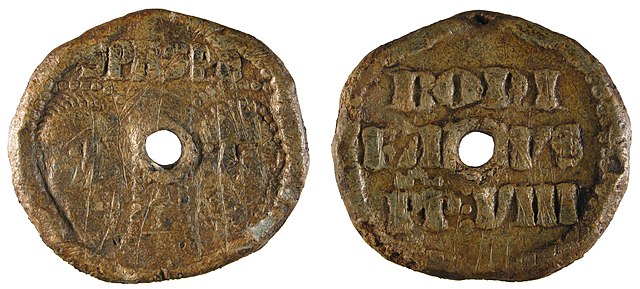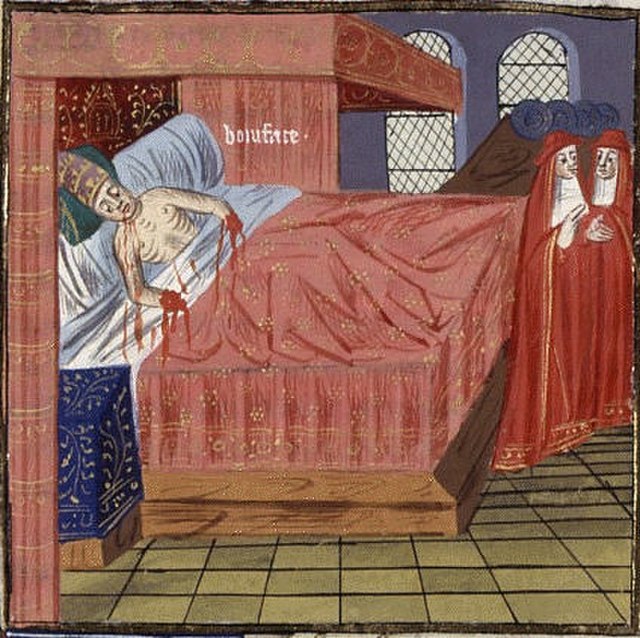Unam sanctam is a papal bull that was issued by Pope Boniface VIII on 18 November 1302. It laid down dogmatic propositions on the unity of the Catholic Church, the necessity of belonging to it for eternal salvation, the position of the Pope as supreme head of the Church and the duty thence arising of submission to the Pope in order to belong to the Church and thus to attain salvation. The Pope further emphasized the higher position of the spiritual in comparison with the secular order. The historian Brian Tierney calls it "probably the most famous" document on church and state in medieval Europe. The original document is lost, but a version of the text can be found in the registers of Boniface VIII in the Vatican Archives. The bull was the definitive statement of the late medieval theory of hierocracy, which argued for the temporal as well as spiritual supremacy of the pope.
Boniface VIII, Bishop of Rome
Pope Boniface VIII, born Benedetto Caetani was the head of the Catholic Church and ruler of the Papal States from 24 December 1294 until his death in 1303. The Caetani family was of baronial origin, with connections to the papacy. He succeeded Pope Celestine V, who had abdicated from the papal throne. Boniface spent his early career abroad in diplomatic roles.
Boniface VIII declaring the Jubilee Year, fresco by Giotto in the Basilica of St. John Lateran
Papal bulla of Boniface VIII (pierced subsequent to original use)
Philip IV receiving the homage of Edward I for Aquitaine
Depiction of the death of Boniface in a 15th-century manuscript of Boccaccio's De Casibus





